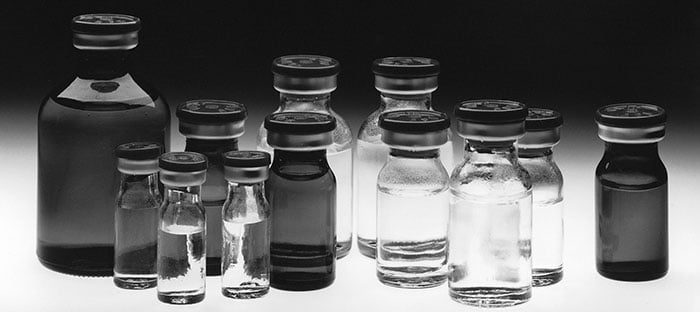
The conditions which a compounded sterile preparation (CSP) is stored under plays an important role in determining the beyond-use date (BUD). A beyond-use date (BUD) is the date or time after which administration of a CSP shall not be initiated and is determined from the date or time the preparation is compounded(1). The BUDs described here are based on the risk of microbial contamination, and assume that the CSP components can remain chemically and physically stable.
Storage in a refrigerator or freezer has shown to slow the growth of microorganisms allowing for longer BUDs for CSPs stored under colder temperatures versus controlled room temperature. Preparation characteristics also play a role in determining BUD. Those characteristics include method of achieving sterility, if sterility testing is performed, and if a preservative is added. Thorough preparation combined with enhanced storage conditions (refrigeration and freezing) can dramatically increase the time that the CSP can be stored before administration.
Assigning a Beyond-Use Date
The storage time of the CSP must not exceed the original BUD even if the storage conditions change, such as storing a CSP at room temperature and then storing it in the freezer. Some CSPs may be stored under various conditions before use. For example, a CSP may be frozen, thawed in a refrigerator, and then stored at room temperature before administration. Once a CSP is stored under a specific condition that would require a shorter BUD, the CSP must be used in that shorter timeframe. Refrigerating and freezing CSPs has a huge impact on BUDs.
several factors, such as sterility considerations. Category 1 CSPS need to be used within 12 hours or less when stored at controlled room temperature (20°-25° C). The same category 1 CSP stored at a refrigerated temperature (2°-8° C) has double the time to be used (< 24 hours). Category 2 CSPs can have controlled room temperature BUDs ranging from 4 days to 42 days depending on preparation characteristics, however, regardless of the preparation characteristics, the BUD can be extended to 45 days after preparation if the CSP is stored in a freezer. Increasing the length of time that the CSP can be used from 4 days to 45 days provides tremendous benefits such as less waste from expired CSPs and greater protection from administering expired CSPs(2).
Storing Compounded Sterile Preparations
Not all cold storage solutions are suitable for storing CSPs. Medical grade refrigerators and freezers provide a uniform environment, as well as help stabilize and maintain temperatures during and after door openings allowing the correct BUDs to be assigned. If the CSP cold storage unit goes out of temperature range, the BUD will need to be adjusted, which may lead to unexpected waste or improper BUD assignment. Medical grade units will ensure a safe, reliable, and effective way to extend the BUD of a CSP leading to safer administration and reduced costs related to less waste.
For a full chart of how preparation characteristics and storage conditions impact the BUDs for CSPs please refer to USP <797>.
References:
(1) "Best Practices." ASHP. ASHP, n.d. Web. 15 Feb. 2016.<http://www.ashp.org/doclibrary/bestpractices/prepgdlcsp.aspx>.
(2) "USP Compounding Standards & Resources." USP Compounding Standards and Resources. N.p.,
n.d. Web. 16 Feb. 2016. <http://www.usp.org/usp-healthcare-professionals/compounding>.



